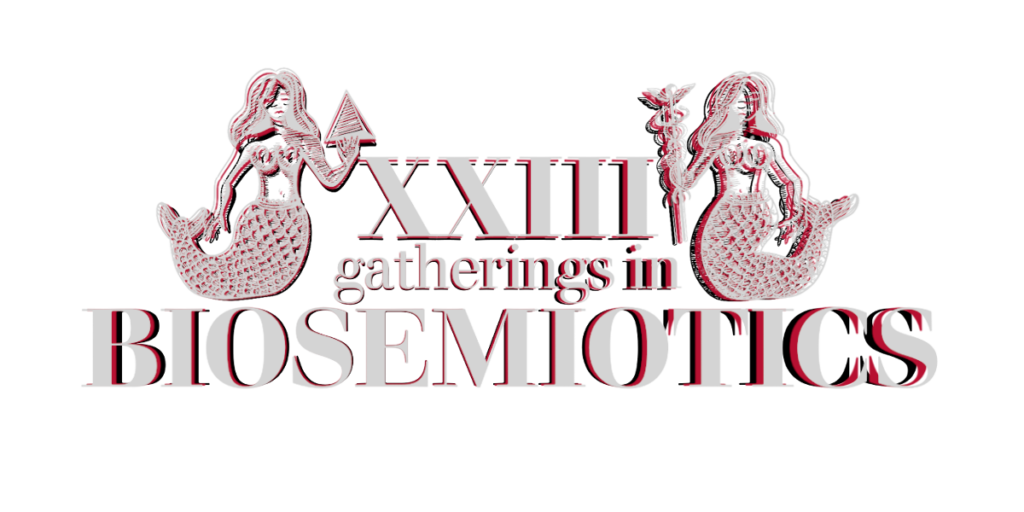Time and Emergence: Towards a narrative inspired understanding of temporal semiosis
[Slides from the presentation]
What is the nature of time? Since the Einstein-Bergson debate this question has often been divided into two camps. One camp approaching space-time in a point-like manner in terms of mathematics and/or physics, and a second camp favouring an anthropocentric phenomenological approach which understands this experienced temporality as irreducible to the ontological universality of Einstein’s space-time. In contrast, this paper brings these two camps closer together by showing how temporality should be understood as an emergent phenomenon in the context of teleodynamic organization. This third approach leaves open a variety of roles time can play in different forms of dynamic organisation, providing a more comprehensive understanding of its role in semiotic dynamics. Biosemiotically, this also accounts for and affords time’s experience according to diverse Umwelten.
Terrence Deacon’s model of autogenesis is shown to follow the same minimal logic of narrative exemplified by Claude Bremond’s structuralist writings on minimal narrative logic (Bremond 1980). By subsequently comparing Paul Ricœur’s narrative extension of hermeneutic temporality (Ricœur 2008) with how “inside and outside” are divided through individuating processes found in Deacon’s simplest model of teleodynamics, the autogen model (Deacon 2013), is set out to understand temporality in this minimal form. Specifically, Ricœur’s embracing of what he calls the aporetic nature of time is taken up, which in part can be understood as the incommensurability of cosmic time (“universal” time i.e., the regular movement of celestial bodies) and phenomenological time (lived experience of time). By subsequently unstably “resolving” these two times in a continuous mimetic narrativization, Ricœur’s narrative temporality reveals itself in congruence with the emergence of teleodynamics. We find similarly in teleodynamics that the difference between “inside and outside,” while never “resolved,” is mimetically mediated in (not) realizing the purpose expressed in the direction of teleodynamic organization.
It is then necessary to consider the threefold aspects of time in this context; (1) time “inside” which deals with change in terms of internal autocatalytic reactions necessary for autogenesis, (2) time “outside” which is the change in context of the autogen’s environment, and (3) in the process where “inside” and “outside” come together as mediated through attaining the purpose of its own self-replication. Neither (1), (2), or (3), can therefore be taken by themselves, nor can they be reduced to a mere point in time as they all have a duration which influences the eventual success (or failure) of the self-replication. Insofar that more or less time is spent in relation to each could influences the outcome of self-replication, a shift to a kind of temporal “thickness” is required capable of dealing with time in terms of meaning-making. This is “thickness” to the extent that it is the duration of time spent autocatalyzing (1), the duration of being in a contextually changing environment (2), and the duration of the process of self-replication (3) which influence the successfulness of attaining the continuation of this proto-evolutionary line. This extends work in biohermeneutics which till now had limited exposure to narrative temporality, some exceptions being the work of Arran Gare and Anton Markoš. Introducing a narrative model of time to the emergence of semiotic dynamism capable of supporting meaningful time differentiation.
References
Bremond, C. (1980). The Logic of Narrative Possibilities. New Literary History, 11(3), 387.
Deacon, T. W. (2013). Incomplete nature: how mind emerged from matter (1. paperback ed.). New York London: W.W. Norton.
Ricœur, P. (2008). Time and narrative. Vol. 3. (K. McLaughlin, Trans.) (Repr., Vol. 3). Chicago, III.: Univ. of Chicago Press.

